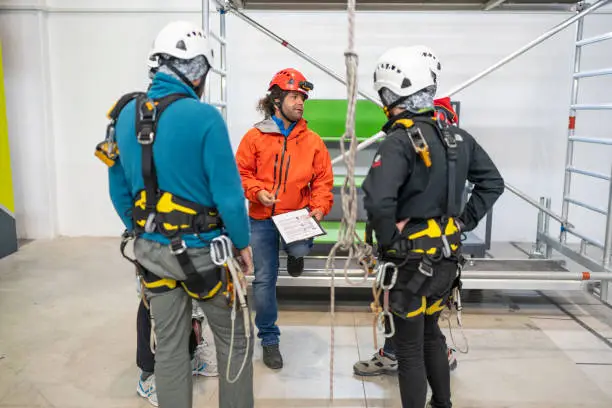
Can Solar Panels Catch Fire? What Businesses and Property Owners Should Know

Why You Should Clean Your Solar Panels Every Year


There are many health and safety challenges when implementing work that takes place at height. This type of work is often a necessity in industries such as construction, warehousing, and engineering, with the installation of scaffolding often serving to facilitate working from height. This piece explores the obligations of employers to ensure safe working from height conditions, along with the specific training required for working on scaffolding.
UK employers must read The Work at Height Regulations 2005 to understand their obligations. This legislation states that those overseeing work that takes place at height, including facilities managers and building owners that contract workers, must take proper steps to minimise the risks of working at height. The law outlines what training and preparation should be done prior to the work, along with the level of supervision and expertise recommended for those undertaking the work.

The Health and Safety Executive has also provided various resources for employers on reducing the risk of a fall from height. This includes preventative measures, guidance on the safe use of ladders, advice for specific industries, and more. The HSE reported that there were a total of 40 related deaths in England, Wales, and Scotland during the 2022/3 period, along with 1000’s of non-lethal falls from height.
You can find more insights into ‘Considerations when Working at Height’ in our other blog covering No Falls Week earlier in the year.

Scaffolding is a temporary metal framework constructed against a structure that provides a platform for workers. Depending on the intended use, scaffolding may consist of multiple levels of planks held in place with metal tubing, couplers, and clamps. For construction work, scaffolding allows workers to safely access various levels of a structure as it is being built.

In engineering and other technical sectors, scaffolding is essential for installations and making changes to existing structures. In both cases, scaffolding may also be used to carry tools, equipment, and materials up and down.
Our team has enrolled on an expert scaffolding training course to solidify their skills and make sure we can provide the best possible services to clients. This will also support our sustainable solutions through Solar PV Repair, Maintenance, and Upgrade.

Scaffolding training is a comprehensive course designed to cover all the possible safety risks when working at height. Although each working at heights course will vary in its contents, most will cover the following areas:

Those tasked with completing work at height should be assessed for physical fitness, experience, coordination, and qualifications. It can take around three years for an individual to become fully qualified as a scaffolder. Nevertheless, completing a few training courses and obtaining relevant certifications can increase demand among STEM recruiters.

The risks of working will vary between industries, workplaces, and projects. Jigsaw Business Group provides tailored support so you can secure the best processes for the business and its employees. This includes areas of health and safety risk such as working at height. So whether you’re looking for a warehouse consultant, manufacturing consultant, or an expert to help with business training and development, we have the skills and experience. Contact a member of the Jigsaw team today.
